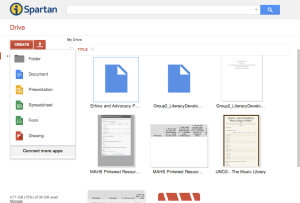I had the opportunity to visit an Elementary School media center this past week. Since my main observation site is a high school, I wanted the opportunity to see what a teacher-librarian’s roles were in these younger grade levels. It was an entirely different atmosphere: I noticed the layout of the media center placed the most emphasis on helping students access the resources the facility had to offer. There were large signs indicating popular authors on the shelves, the computers were located in a separate, spacious area, and the nonfiction section had signs on each shelf listing the Dewey Decimal numbers and the subjects students could find within each range of numbers. Students seemed to have no trouble navigating the collection, and I was impressed with the students’ ability to research independently and use the computers for different educational activities. In some ways, these younger students appeared to have stronger research skills than many of the high school students with whom I’ve interacted this semester.
The librarian, Mrs. Frost, was energetic and enthusiastic about her job. She explained that she viewed herself not only as a librarian, but a valuable member of the school’s support staff. Mrs. Frost explained the importance of volunteering for school functions and ensuring the school understood the importance of the media center and its specialist. Her schedule, to my surprise, was quite flexible for an Elementary School librarian –– she had a flexible schedule for the first half of every day and worked on a fixed schedule the last half of the day. Every week, this schedule would alternate. I found it to be confusing, and Mrs. Frost admitted that it could be difficult to get used to. Because of this, she emphasized the importance of planning ahead and always being prepared to adapt to each day’s requirements.
Although the media center was small, I thought it was quite welcoming. Mrs. Frost explained that they had renovated recently, and the space was much larger than what she had to work with before. During my observations, I helped check books in and out, learned about budgeting and the demographics of the school and community, and aided Mrs. Frost in planning the school’s upcoming Farm Day event. I felt as if I was very “hands-on” in this observation, which is something that I haven’t had the opportunity to do in even my main field experience site. Mrs. Frost was helpful and supportive, and she invited me to come back to volunteer whenever I had the opportunity. I think I’ll take her up on the offer.
